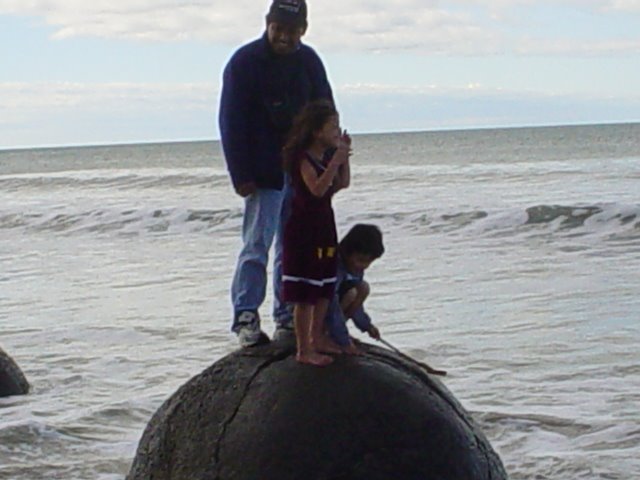Target Climate Change

picture and article below from www.stuff.co.nz
Can you and I make a difference?
Maybe not, but why dont we try?
As we all know, we are consuming more and more oil, fossil fuel, coal and wood as well as clearing forest to make way for development. What development?
Is exchanging rainforest for concrete jungle good?
The debate about green house gases and climate change is over, BUT we are dragging our feet when it comes to what should be done.
We shall consume less resources, and target carbon neutral. ie given choice between walking or cycling and driving to anywhere, we should opt for cycling or walking.
We shall plant more carbon absorber, ie trees, and not clearing trees and jungle for palm oil plantation, even though govt says that biodiesel is the next big thing.
We shall not pollute our environment, and this include not wasting resources and recyclable.
You can add more, and we shall do the utmost we can..
Climate change shatters huge ice shelf
By REBECCA PALMER and PAUL EASTON - The Dominion Post | Thursday, 27 March 2008
OFF THE SHELF: A 415sq/km chunk of the Wilkins Ice Shelf has collapsed into the Ancarctic ocean.
A gigantic Antarctic ice shelf is collapsing and global warming is being blamed.
An iceberg 41 kilometres long and 2.5km wide fell off the Wilkins Ice Shelf on the Antarctic Peninsula in late February.
That triggered the disintegration of 405 square kilometres of ice.
The entire ice shelf - the size of the Hawke's Bay region - is now in danger of disintegrating.
The destruction was captured in satellite pictures from the National Snow and Ice Data Center in the United States.
Scientists said a thin strand of ice about 6km wide was all that was stopping the remaining 13,680sq km shelf from collapsing.
Professor Tim Naish, of Victoria University's Antarctic Research Centre, said the breakup was part of a pattern seen for about 50 years. Ice breaks were fully expected.
"They're likely to be a more frequent event."
The Antarctic Peninsula had warmed by about 2½ degrees in the past 50 years - more than other parts of the world. Remnants of the shelf could end up near New Zealand, he said.
In 2006, large icebergs drifted up the South Island's east coast.
Professor Naish said the breakdown of the Wilkins shelf would not contribute to rising sea levels. He compared it to an ice-cube in a glass of water - when the cube melts, the water level does not go up, as it has already been displaced.
But the disappearance of ice shelves could cause connected glaciers to melt and flow into the ocean more quickly, which would raise sea levels.
Niwa principal scientist David Wratt said the ice shelf collapse was likely to be a result of climate change. "It's certainly a sign that things are happening."
The peninsula's Larsen Ice Shelf had collapsed in 2002, with 500 billion tonnes of ice breaking up into bergs in less than a month.
Ted Scambos, a glaciologist at the snow and ice data center, alerted the British Antarctic Survey when he saw a big chunk of the Wilkins shelf breaking away on satellite images.
An aircraft was sent to check the size of the collapse.
"Big, hefty chunks of ice, the size of small houses, look as though they've been thrown around like rubble -it's like an explosion," researcher Jim Elliot said.
By March 8, about 570sq km had broken off, including the chunk Dr Scambos had seen.
"I didn't expect to see things happen this quickly," British Antarctic Survey scientist David Vaughan said. "The ice shelf is hanging by a thread."
Dr Vaughan, who earlier predicted the Wilkins shelf would collapse in 30 years, said the collapse was the result of global warming.
Dr Scambos said scientists believed the shelf had been in place for hundreds of years.







No comments:
Post a Comment